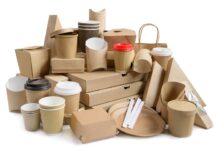Bees are becoming more prevalent in many homes, thanks to the warm weather and integration of pollinating plant species into gardens and indoor areas. This can help draw them towards your home, and make them feel safe.
Because of the added protection, it is not uncommon for bees to build their hives within your home. If you have experienced this in the past, you may be familiar with mowing around beehives and other everyday tasks to avoid disturbing this species.
Here are some steps that can help you safely remove a beehive from your home, and avoiding getting stung in the process.
A beekeeper will require how to start beekeeping and honey bees for starting his Apiary.
Give Them Space
Firstly, you should avoid approaching the hive once you have discovered them in your home. The bees can see this as an attack and begin to defend their hive by stinging. Make sure you are not provoking them in order to reduce your chances of getting stung.
It is completely normal for bees to build their hive on tree branches, a door post, or fence post. The worker bees tend to create their hive around their queen. Until you can safely remove the hive, it is important to steer clear of the room or area of your home that the hive is.
Keep Pets And Sting Allergy Sufferers Away
Similarly, you should to keep your family pets away from the hive. This can be harder because you cannot explain to them what could happen if they provoke the bees. It is natural for dogs and even cats to investigate something new and unusual, but you should try and stop them from going towards it.
Bee stings can be painful for anybody, and you should typically monitor your dog when they are outdoors if the hive is nearby. The same applies to if the hive is indoors, and it is important to stop people and animals from getting too close to it.
If anybody in your household is allergic to bee stings, or if they suffer after getting stung, then they should also be kept away from the hive. Speak with them about the risks if the bees feel provoked, and informing them of where the hive is so that they can avoid it.
Find Out Where They Are Coming From
Another key step to removing bees from your home safely is to figure out exactly where they are coming from. If they have managed to build their hive in a room in your home, then it is worth looking into how they could have gotten in.
This could be anything from a broken window frame to a mosquito net that isn’t being used as frequently as it should be. Take the necessary steps to fix these in order to prevent another hive from being created in your home.
Try Not To Use Traps Or Insecticides
Unlike other common insects that can be found within the home, there are a range of policies in place to protect the bees. This means that certain chemicals and insecticides are banned, and cannot be used near a hive.
Likewise, traps tend to be ineffective. This is because of the container full of angry bees that you will need to deal with. When you are doing this, it can put your own safety at risk and increase the chances of getting stung.
Call A Professional
One of the safest ways to deal with a beehive within your home is to contact a professional. You can reach out to someone with more experience handling bees and hives, so that they can correctly remove the hive and the queen with minimal disruption.
You could call the local beekeeper if you believe that they are honeybees, or speak with a local pest management service for suggestions if you are unsure.
Remove All Traces Of The Hive
Once the queen has been safely removed from your home, it is time to remove all traces of the hive. Bees that make their hive in someone’s home are likely to leave trace amounts of honey in walls and on surfaces.
Over time, this can attract insects and larger animals. Make sure you thoroughly clean the area that the hive was in, to prevent this.
Summary
Bees are relatively gentle insects with a highly complex networking system. They build their hive around their queen, which is why the hives can be found in unusual places. Getting rid of a beehive should be done carefully, and it is important to contact a professional for extra help.


























